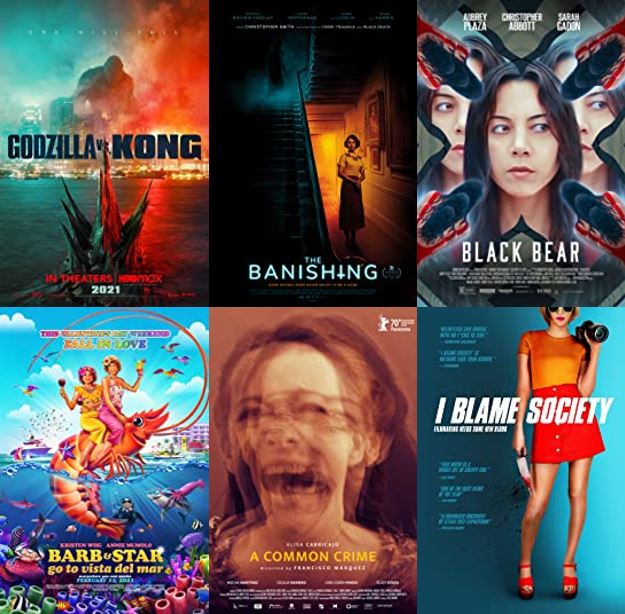
After three movies in the MonsterVerse series, the two beasts finally meet in Godzilla vs. Kong. With the interest lying in the fights between the pair, the plot is unnecessarily convoluted – it involves travelling to the centre of the earth to find Kong’s true home and a duplicitous corporation (aren’t they all!?) manipulating Godzilla to destroy, well, pretty much everything.
It is best not to worry too much about the story and enjoy the sprawling action scenes, as long as you are as unbothered as the characters in the film are about the thousands of people who are killed in the process! A partial return to form after the dreary Godzilla: King of the Monsters but not a patch on the inventive Kong: Skull Island. With many cinemas set to re-open, this is one that would be best seen on a big screen.
Godzilla vs. Kong: 6.5 out of 10
In 1930s England, a reverend (John Hefferman) and his young wife (Jessica Brown Findlay) move into an old house that turns out to be haunted. That synopsis probably makes The Banishing sound pretty derivative. Whilst it is true that the scares are pretty straightforward and predictable, the setting of a country on the verge of war lend it more interest as does a marvellously over the top performance from Sean Harris.
The Banishing: 6 out of 10
I Blame Society is a real labour of love for Gillian Wallace Horvat. She not only co-wrote and produced this low budget film but also stars as Gillian (inevitably). She is a film director who is struggling to get anything made so turns her hand to being a serial killer. Although some nice observations are made about women in the movie industry, this is mostly tiresome stuff. It does however have a satisfying ending.
I Blame Society: 5 out of 10
Equally self indulgent is Black Bear, which is split into two distinct parts. In the first half, Alison (Aubrey Plaza), a film director, goes to spend some time in a remote house with musician Gabe (Chrisopher Abbott) and his pregnant partner Blair (Sarah Gadon). The couple bicker a lot and Alison sleeps with Gabe. We then move onto the second half where Gabe is now directing a film in the same location with Alison and Blair actresses. Is this a completely separate story or was the first part a scene from the film being shot in the second part? If it is that, why have the female characters swapped roles?
You may have more fun than me in trying to untangle the plot or you might find the three central characters so insufferable, in both halves, that you don’t care. Plaza, though is excellent.
Black Bear: 6 out of 10
Pick of the week is A Common Crime. This Argentinian drama stars a tremendous Elisa Carricajo as Cecilia, a caring and intelligent Sociology teacher. One stormy night, the son of her maid who has been in trouble with the law before, knocks on her door. Scared, Cecilia does not answer. The next day the news comes out that the boy is missing with the finger of suspicion pointing at the police. Cecilia struggles with the guilt of not helping him.
This is deeply engrossing stuff with a narrative that ranges from crime procedural to psychological thriller to spine-tingling horror. The script by Francisco Marquez (who also directs) and Tomas Downey cleverly echoes the Disappeared of the 70s in Argentina and at the centre of the story, Carricajo remarkably portrays an initially calm woman who becomes increasingly tormented without ever reverting to histrionics.
A Common Crime: 8.5 out of 10
Finally a real oddity in Barb and Star Go To Vista Del Mar. Kristen Wiig and Annie Mumalo star as the titular heroes who are lifelong friends. When they take their first ever trip, to Florida, they become involved in a bizarre plot to murder everyone in the town of Vista Del Mar. This does have a few funny moments in the style of Airplane or The Naked Gun. But the scattershot approach provides way more gags that miss than hit and the shoehorning of supposedly comic songs is more embarrassing than funny.
Barb and Star Go To Vista Del Mar: 5 out of 10